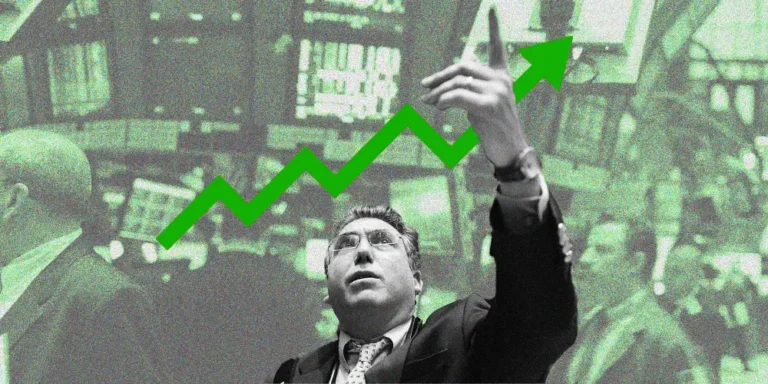A notorious market bear who called the 2000 and 2008 crashes shares 3 signs it’s a terrible time to invest in the S&P 500 — and warns stocks are due to underperform Treasurys by 10% over the next 12 years
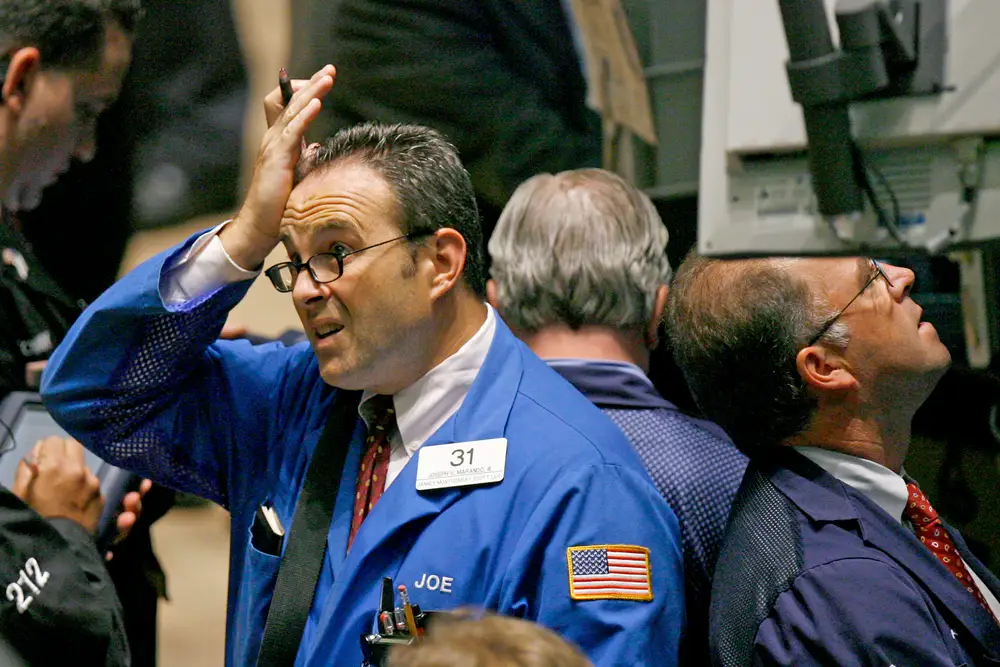
Before investing in the stock market, John Hussman urges investors to keep in mind that return outcomes ultimately have different probabilities based on when you buy in.
While the S&P 500 has averaged 10.5% annual returns since 1957, that doesn’t mean those are the average returns you’ll get no matter when you enter the market.
“This is like stepping into a house with two rooms, one with the temperature at 0 degrees and one at 140 degrees, and expecting a temperature of 70 either way,” said Hussman, the president of the Hussman Investment Trust who called the 2000 and 2008 crashes, in an October 17 note.
Case in point, if you bought in on February 14, 2020, you’d be up 71%. But if you bought in just over a month later, at the bottom of the pandemic-driven crash on March 20, you’d be up 152% right now. They’re both great outcomes, no doubt. But they’re very different. And in business cycles where monetary and fiscal stimulus aren’t as robust, the market can take a much longer time to recover.
Right now, a few different variables show that investors should expect poor outcomes over the next 12 years if they were to invest in the S&P 500 today, Hussman said.
First, there are valuation levels. Hussman’s go-to measure is the market cap of non-financial stocks divided by those stocks’ total gross value added. The metric is at all-time highs, surpassing the largest bubble peaks in history.
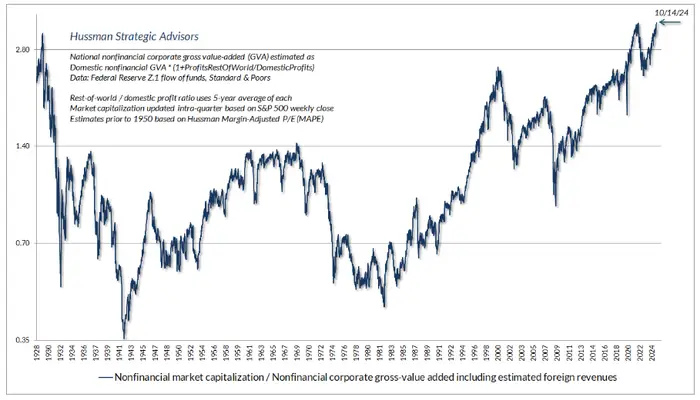
Hussman likes it so much because it’s been a fairly good predictor of 12-year market returns relative to 10-year Treasury returns. Here’s the relationship between expectations and actual market returns. Current expectations have the S&P 500 underperforming Treasurys by 9.9% annually over the next 12 years.

Then there’s investor sentiment, which Hussman measures through the uniformity of movement in thousands of securities. In the chart below, when the measure goes flat like in 2000 and 2008, it’s historically been bad for stocks.
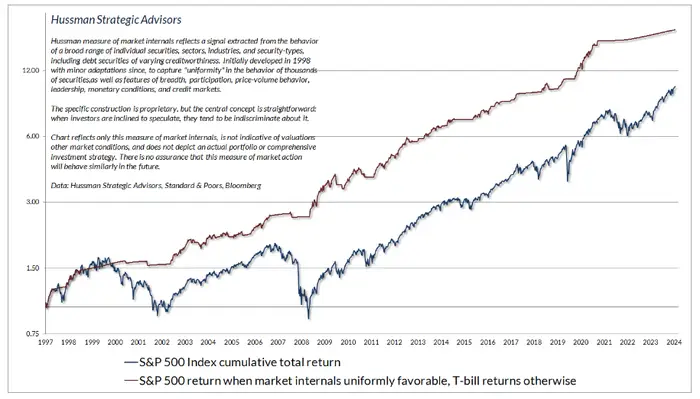
Finally, there’s the accumulation of warning signs of market over-extension that rivals prior major downturn periods. The individual warning signs that Hussman monitors are various technical indicators, like the S&P 500 being within 2% of its 5-year high while less than 72% of stocks are below their 200-day moving averages and 2.5% of stocks hit new both 52-week highs and lows at the same time, among other conflicting signals.
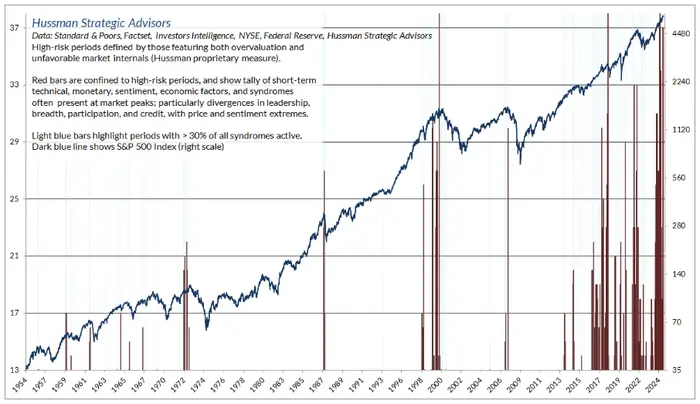
Hussman’s track record — and his views in context
Hussman’s outlook is often seen as extreme, and perhaps fairly so. But valuations are causing skepticism about future market returns among others on Wall Street, even if not to the same degree.
Earlier this week, Goldman Sachs forecast that the S&P 500 would average 3% annual returns over the next decade. That’s less than the 4.2% annual yield that risk-free 10-year Treasurys offer.
It’s also worth remembering that Hussman’s outlook is only for a 12-year period if you were to buy in now — not if you plan to hold for multiple decades.
For the uninitiated, Hussman has repeatedly made headlines by predicting a stock-market decline exceeding 60% and forecasting a full decade of negative equity returns. And as the stock market ground mostly higher, he persisted with his doomsday calls.
But before you dismiss Hussman as a wonky perma-bear, consider again his track record. Here are the arguments he’s laid out:
- He predicted in March 2000 that tech stocks would plunge 83%, and then the tech-heavy Nasdaq 100 index lost an “improbably precise” 83% during a period from 2000 to 2002.
- He predicted in 2000 that the S&P 500 would probably see negative total returns over the following decade, which it did.
- He predicted in April 2007 that the S&P 500 could lose 40%, then it lost 55% in the subsequent collapse from 2007 to 2009.
Hussman’s recent returns, however, have been less than stellar. His Strategic Growth Fund is down about 55% since December 2010 and has fallen 16% in the past 12 months. The S&P 500, by comparison, is up about 39% over the past year.
The amount of bearish evidence being unearthed by Hussman continues to mount, and his calls over the past couple of years for a substantial sell-off began to prove accurate in 2022. Yes, there may still be returns to be realized in this new bull market, but at what point does the mounting risk of a larger crash become too unbearable?
That’s a question investors will have to answer themselves — and one that Hussman will keep exploring in the interim.





